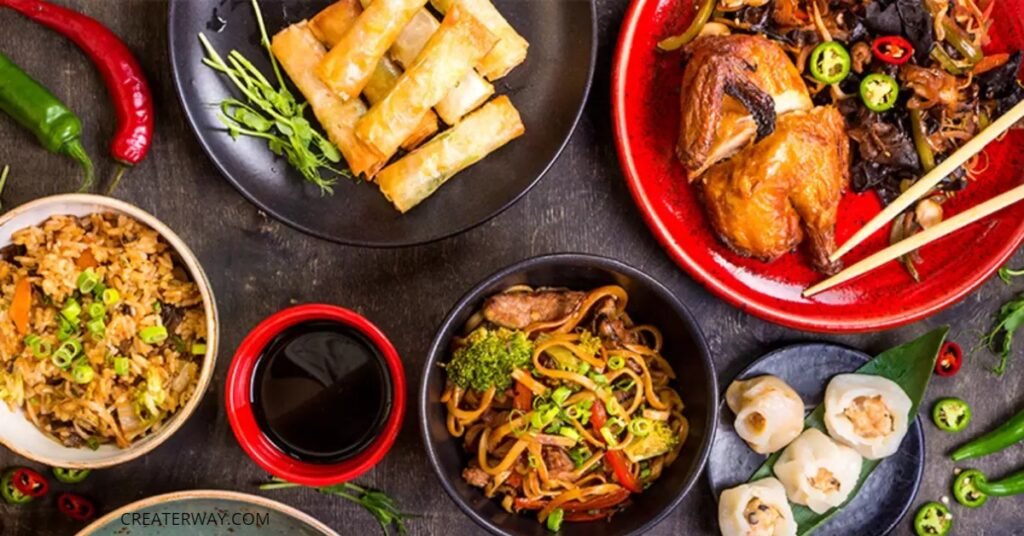FOOD
WHAT IS CONTINENTAL FOOD?

When we venture into the realm of gastronomy, the term “Continental Food” frequently emerges. But what does it truly entail? In the culinary universe, it signifies the diverse culinary traditions of the European continent, encompassing Western and Eastern Europe, along with the Mediterranean region.
Origins of the Term

The inception of “Continental Food” can be traced back to the United States in the 19th century. During this period, it denoted the introduction of European cuisine to American restaurants. Over time, this term has evolved into a global expression representing the flavors of European culinary traditions.
Varieties of Continental Food
Continental Food boasts an array of distinctive types, each distinguished by its unique flavors and culinary techniques.
French Cuisine
French cuisine stands out for its sophistication, artistry, and rich culinary heritage. It serves as a global benchmark for fine dining. French cooking revolves around classical methods and a profound reverence for premium ingredients. Staples such as butter, cream, and wine are frequently employed, contributing to the opulent and indulgent character of French dishes. Iconic French delights encompass coq au vin, a hearty chicken stew, and bouillabaisse, a flavorful seafood soup. French bread, including baguettes and croissants, is renowned for its crisp crust and airy interior. The art of French patisserie, with delicate pastries like éclairs and macarons, showcases the country’s culinary finesse. The French dining experience revolves around leisurely, multi-course meals harmoniously paired with wine. French gastronomy embodies a profound appreciation for the pleasures of the table, establishing it as a symbol of culinary excellence worldwide.
Italian Cuisine
Italian cuisine captivates with its diverse regional dishes and a strong emphasis on fresh, top-quality ingredients. Pasta, with its countless shapes and accompanying sauces, takes center stage, from classic spaghetti with marinara to the indulgent fettuccine Alfredo. Olive oil, garlic, and tomatoes serve as foundational elements, infusing dishes with rich Mediterranean flavors. The universally cherished pizza, born in Naples, features a thin, crispy crust adorned with a medley of toppings. Italian cuisine also celebrates artisanal cheeses and cured meats, such as Parmigiano-Reggiano and prosciutto. Meals in Italy embrace a communal spirit, often encompassing multiple courses, each accompanied by fine wine. The Italian passion for food and reverence for tradition transform every meal into a cultural experience.
Spanish Cuisine
Spanish cuisine is celebrated for its vibrant and diverse flavors, deeply rooted in regional traditions and a commitment to fresh ingredients. The concept of tapas, offering an array of small dishes, defines Spanish dining, providing a tapestry of flavors in a single meal. Ingredients like olive oil, garlic, and saffron infuse dishes with distinctive Spanish flair. Paella, a flavorful rice dish, exemplifies the fusion of these ingredients with seafood, meat, and vegetables. Spanish ham, such as Jamón Ibérico, is revered worldwide for its exceptional quality and taste. The communal and vibrant nature of Spanish dining showcases the country’s profound cultural connection to food, making its cuisine a global favorite.
German Cuisine
Renowned for its hearty and flavorful dishes, German cuisine has deep roots in tradition and bears the influence of the country’s diverse regions. Iconic German offerings encompass sausages like bratwurst and currywurst, often served with sauerkraut, and the beloved pretzels, or “brezeln,” typically paired with mustard. Potatoes and bread play pivotal roles, appearing in dishes like potato dumplings and rye bread. The famous schnitzel, a breaded and fried cutlet, stands out as a culinary classic. The rich flavors and comforting nature of German cuisine continue to delight both locals and international food enthusiasts.
Greek Cuisine
Greek cuisine shines for its reliance on fresh, locally sourced ingredients and its alignment with the healthy Mediterranean diet. Olive oil, olives, honey, herbs, and a variety of vegetables form the culinary foundation, resulting in renowned dishes such as the Greek salad, a vibrant medley of tomatoes, cucumbers, onions, olives, and feta cheese. The cuisine’s focus on simplicity and wholesomeness is evident in the prominence of grains and seafood, with a limited consumption of red meat. Greek cuisine not only tantalizes taste buds with its rich flavors but also offers a pathway to a healthier lifestyle, solidifying its place as a cherished culinary tradition in the Mediterranean and beyond.
What Sets Continental Food Apart?
Continental Food’s distinctiveness lies in the diverse array of flavors and ingredients that define each regional cuisine. It encompasses a culinary journey through Europe, from the refined elegance of French dishes to the heartiness of German classics and the vibrant, fresh flavors of Italian, Spanish, and Greek cuisines. Continental Food invites you to savor the rich tapestry of European culinary traditions.



















